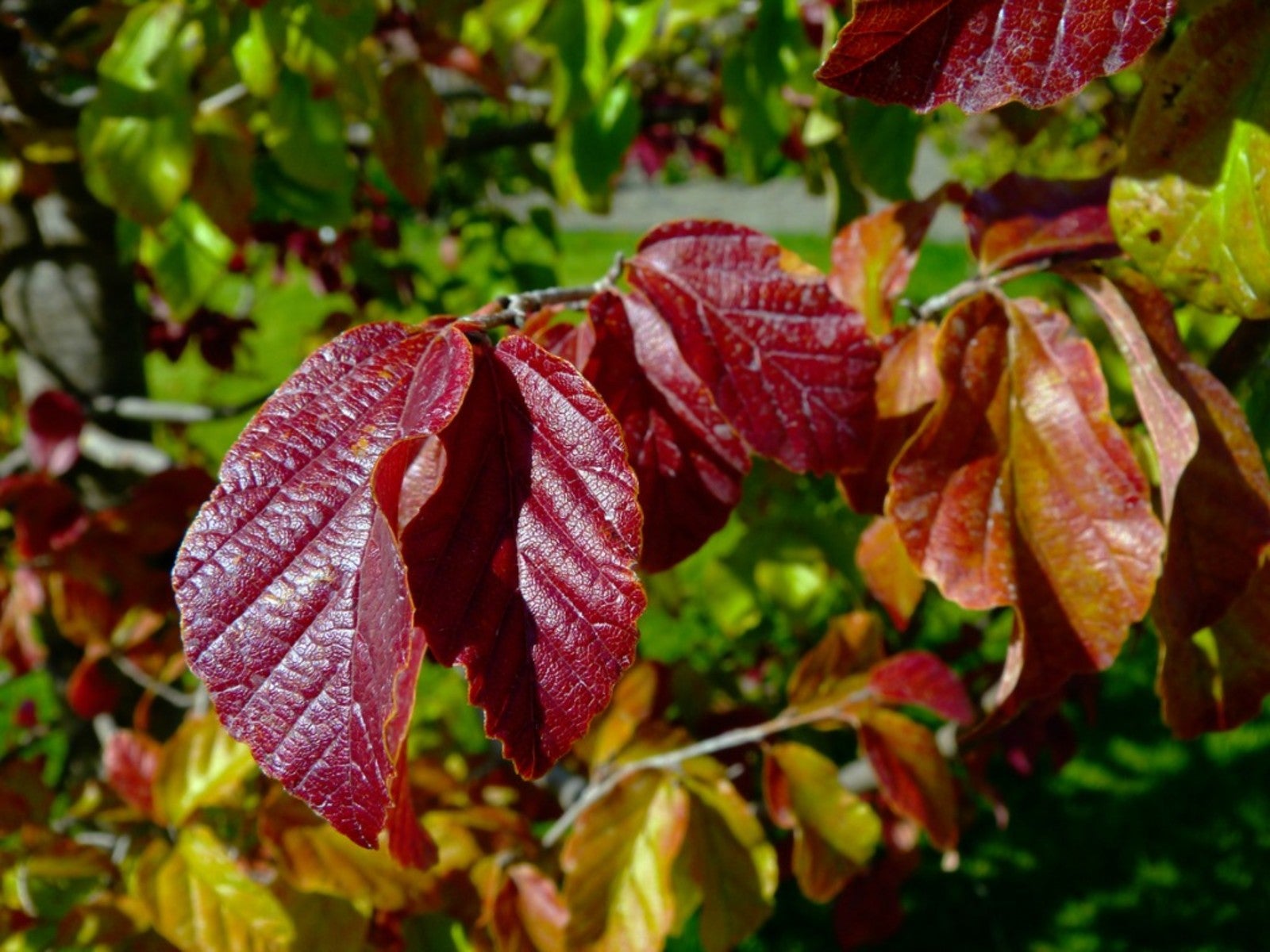Persian Ironwood Facts - How To Grow A Persian Ironwood Tree


The first time you see a Persian ironwood tree (Parrotia persica), you might think it would be better called a shrub. It is a tree that grows with many trunks and doesn’t get to a towering height, making it a good choice for smaller gardens.
Persian ironwood offers year-round interest with showy red flowers in spring and lovely, exfoliating bark on display in winter. Read on for more Persian ironwood facts, including tips on how to care for the tree.
Persian Ironwood Facts
It will not surprise you to learn that the Persian ironwood tree is native to Iran, modern-day Persia. It is a fairly small tree, topping out at 35 feet (11 m.) but is often seen shorter. The tree grows with many trunks and a rounded canopy.
According to Persian ironwood information, it branches quite low which means that it can be as broad as it is tall. It is relatively fast growing at 12 to 24 inches (30 to 60 cm.) per year.
Persian Ironwood Fall Color
This is a little deciduous tree that makes a real statement in your garden. It produces a mass of ruby red stamens in late winter and early spring. They appear on the bare branches and offer early color in the garden. Over time they develop into chocolate-brown seed capsules.
Leaves appear soon after. They are some 4 inches (10 cm.) long and emerge reddish-purple, the color deepening to a bright shade of green in summer. Then, in autumn, you can anticipate the much-admired Persian ironwood fall color as the leaves turns shades of yellow and orange before falling.
As Persian ironwood trees mature, the bark becomes ornamental as well. It peels back, leaving patches of gray, green, white and brown, providing a delightful display in winter.
Sign up for the Gardening Know How newsletter today and receive a free copy of our e-book "How to Grow Delicious Tomatoes".
Persian Ironwood Care
If you are considering growing a Persian ironwood tree, you will want to know more about its cultural requirements. Persian ironwood care is easier when the tree is planted in an appropriate site. It thrives in U.S. Department of Agriculture plant hardiness zones 4 through 7 or 8.
Plant your tree in fertile, slightly acidic soil. According to published Persian ironwood information, excellent drainage is a must. Select a location that gets direct sun most of the day. As far as irrigation, this tree likes regular water, but it can be drought resistant once established. What about pest issues? You have no reason to anticipate serious pest problems with the Persian ironwood tree.

Teo Spengler is a master gardener and a docent at the San Francisco Botanical Garden, where she hosts public tours. She has studied horticulture and written about nature, trees, plants, and gardening for more than two decades, following a career as an attorney and legal writer. Her extended family includes some 30 houseplants and hundreds of outdoor plants, including 250 trees, which are her main passion. Spengler currently splits her life between San Francisco and the French Basque Country, though she was raised in Alaska, giving her experience of gardening in a range of climates.